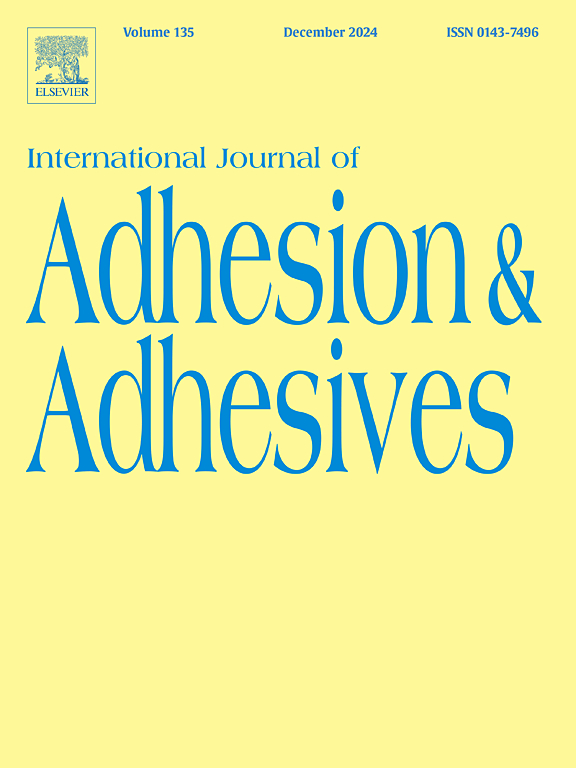Effect of the joining temperature on the tensile–shear mechanical properties of clinch-adhesive joints in steel and aluminum alloy sheets
IF 3.2
3区 材料科学
Q2 ENGINEERING, CHEMICAL
International Journal of Adhesion and Adhesives
Pub Date : 2025-02-20
DOI:10.1016/j.ijadhadh.2025.103986
引用次数: 0
Abstract
Given the temperature dependence of the performance of polymer-based adhesives, a warm clinch-adhesive joining technique, aimed at enhancing the formation quality of dissimilar material joints between steel and aluminum, was proposed in this study. The temperature-sensitive epoxy resin Araldite® 2015 was selected as the adhesive. Clinching was implemented at four different process temperatures, i.e., C, C, C and C, and the mechanical response of the joints was comprehensively assessed through tensile–shear tests at room temperature. Additionally, a finite element model of the clinch-adhesive joints subjected to tensile–shear loading at room temperature was developed to investigate the failure mechanism. The results revealed that increasing the process temperature to C effectively promoted plastic flow of the adhesive layer and significantly enhanced the formation of mechanical interlocks, with an increase in the interlock depth of 22.9%; furthermore, the energy absorption capacity of the joint upon adhesive layer failure increased by 53.9%, and the peak load capacity increased by 16.8%.
连接温度对钢、铝合金板钉接接头拉剪力学性能的影响
鉴于聚合物基胶粘剂性能对温度的依赖性,本文提出了一种热粘合连接技术,旨在提高钢铝异种材料连接的形成质量。胶粘剂选用温敏环氧树脂Araldite®2015。在25°C、50°C、65°C和80°C四种不同的工艺温度下进行夹持,并通过室温下的拉伸-剪切试验综合评估关节的力学响应。在此基础上,建立了常温拉剪作用下的粘接节点有限元模型,研究了其破坏机理。结果表明,将加工温度提高到80°C,可有效促进粘接层的塑性流动,并显著增强机械联锁的形成,联锁深度增加22.9%;粘结层破坏后接头的吸能能力提高了53.9%,峰值承载能力提高了16.8%。
本文章由计算机程序翻译,如有差异,请以英文原文为准。
求助全文
约1分钟内获得全文
求助全文
来源期刊

International Journal of Adhesion and Adhesives
工程技术-材料科学:综合
CiteScore
6.90
自引率
8.80%
发文量
200
审稿时长
8.3 months
期刊介绍:
The International Journal of Adhesion and Adhesives draws together the many aspects of the science and technology of adhesive materials, from fundamental research and development work to industrial applications. Subject areas covered include: interfacial interactions, surface chemistry, methods of testing, accumulation of test data on physical and mechanical properties, environmental effects, new adhesive materials, sealants, design of bonded joints, and manufacturing technology.
 求助内容:
求助内容: 应助结果提醒方式:
应助结果提醒方式:


